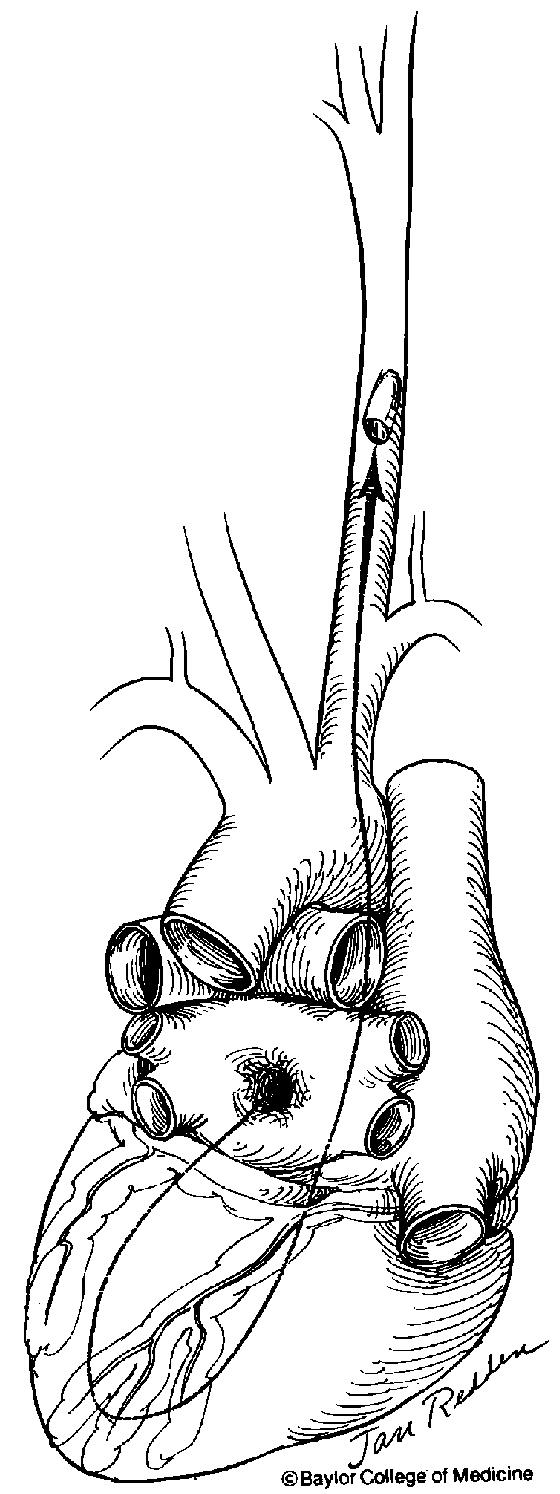Physical Address
304 North Cardinal St.
Dorchester Center, MA 02124
The heart and aorta and its great vessels are encased in the chest cavity, protected by the vertebral bodies, rib cage, clavicle, manubrium, and sternum. One of the earliest reports of thoracic vascular injury was described by Vesalius in 1557 of a fatal, blunt traumatic rupture of the aorta in a man who was thrown from a horse. It was not until 1959 that Passaro and Pace reported the first successful primary repair of traumatic aortic rupture performed by Klassen in 1958.
Before the development of modern trauma centers, most individuals with thoracic vascular trauma died before reaching the hospital. With the development of emergency medical systems (EMS), the number of patients with thoracic vascular injury surviving to the hospital is increasing and the complexity of their injuries is becoming more challenging. This is reflected by the report by Mattox et al describing 5760 cardiovascular injuries in 4459 patients over a 30-year period from 1958 to 1987 in Houston, Texas, as compared with the report by DeBakey and Simeone of the few during World War II.
Thoracic vascular injury can be a challenge as exposure of these injuries may not be straightforward. Poorly planned incisions can potentially lead to devastating consequences. Because of the increasing complexity of thoracic vascular injuries reaching trauma centers, it is important that the surgeons caring for them have a systematic approach. Additionally, advances in technology continue to provide increasing capability in diagnosis and management but must be continually evaluated objectively.
Thoracic trauma is responsible for 50% of all trauma deaths. In a large series of thoracic trauma patients, the aorta and great vessels were injured in 4% of cases. More than 90% of the thoracic great vessel injuries are due to penetrating trauma, where all thoracic vessels are potentially susceptible to injury. The anatomic location of the ascending aorta makes it the most at risk from stab wounds, whereas gunshot wounds more commonly involve the descending thoracic aorta. Blunt trauma can potentially cause injury to all thoracic arteries and veins, but the common injuries involve the descending thoracic aorta, the innominate artery origin, the vena cavae, and the pulmonary veins.
A significant number of thoracic great vessel injuries are caused by penetrating or iatrogenic trauma. These injuries can present with external or internal hemorrhage, vascular thrombosis from an intimal flap, or pseudoaneurysm. With the various types of missiles causing penetrating vascular trauma, all thoracic vascular structures are at risk. The bony structures, interestingly, can also provide unique patterns of injuries as they can cause fragmentation of the missile/bone or alter vectors of the original direction of penetration. External bleeding can occur with injuries to vessels at the thoracic outlet, whereas internal hemorrhage commonly occurs with aortic and caval injuries. Intrathoracic great vessel injuries can specifically present with internal bleeding into the mediastinum, pleural space, or pericardial sac. It is important to note that the presence of a normal palpable distal pulse does not rule out a proximal vascular injury. Penetrating vascular injuries can be completely contained by the adventitia of the vessel with blood flow preserved distally.
The absence of a significant amount of bleeding does not rule out vascular injury from penetrating trauma. Vascular injuries from stab wounds can often cause an intimal flap, which may eventually lead to partial or complete thrombosis of injured vessels. Small vascular disruptions may not present initially with bleeding but can present with formation of a pseudoaneurysm. These may later rupture. Blast vascular injuries are often underestimated because intimal disruption sometimes extends beyond external signs of injury. For this reason, meticulous intimal inspection after opening the blood vessel is important during thoracic vascular reconstruction.
Because of the large diameter of thoracic vessels, missiles can enter the vessel and migrate distally ( Fig. 1 ). The diagnosis of bullet embolism is often delayed because the course of the bullet may be unclear. Bullet emboli from thoracic missiles usually lodge in the iliac and femoral vessels but may also embolize to the neck vessels. The site of entry should be controlled for hemorrhage first, followed with attempts at removing the bullet emboli with endovascular intervention or separate arteriotomy.

There are two proposed mechanisms for blunt trauma injuries to thoracic aorta and great vessels. During anteroposterior impact in the thorax, the aorta and its branched vessels may be “pinched” between the sternum and the vertebral column, resulting in vascular disruption. In rapid-deceleration thoracic injuries from either frontal or side impact motor vehicle accidents, the point of attachment of pulmonary veins and vena cava and the relative immobility of the descending aorta at the level of the ligamentum arteriosum and diaphragm increase their susceptibility to rupture. In contrast to patients with aortic medial disease in which the media/adventitia is the restraining barrier, it is the intact parietal pleura that may contain the hematoma and prevent massive hemothorax.
Become a Clinical Tree membership for Full access and enjoy Unlimited articles
If you are a member. Log in here